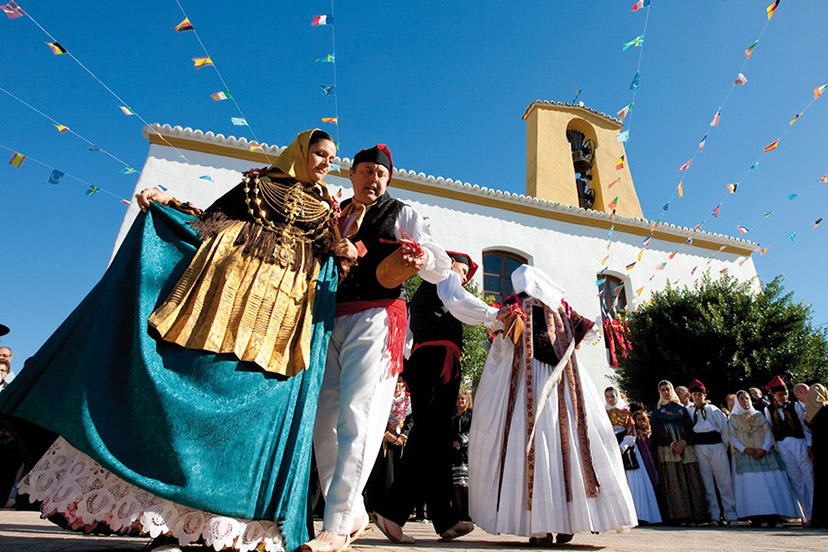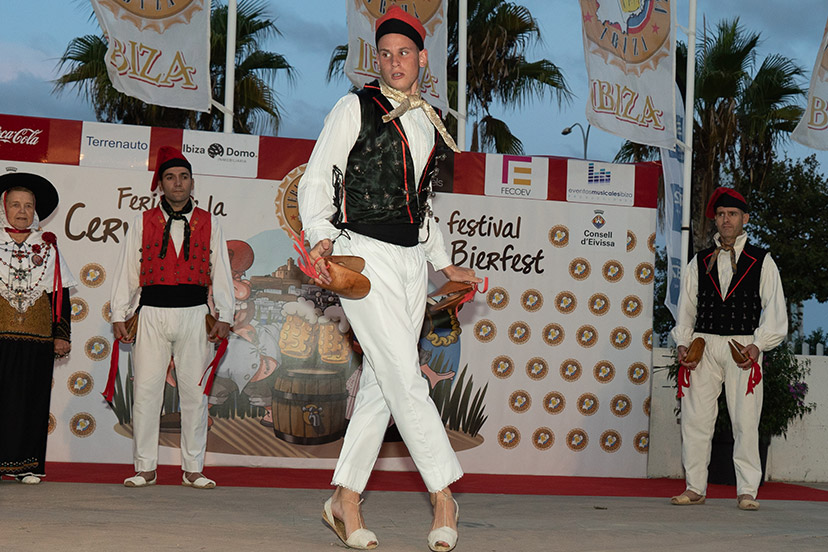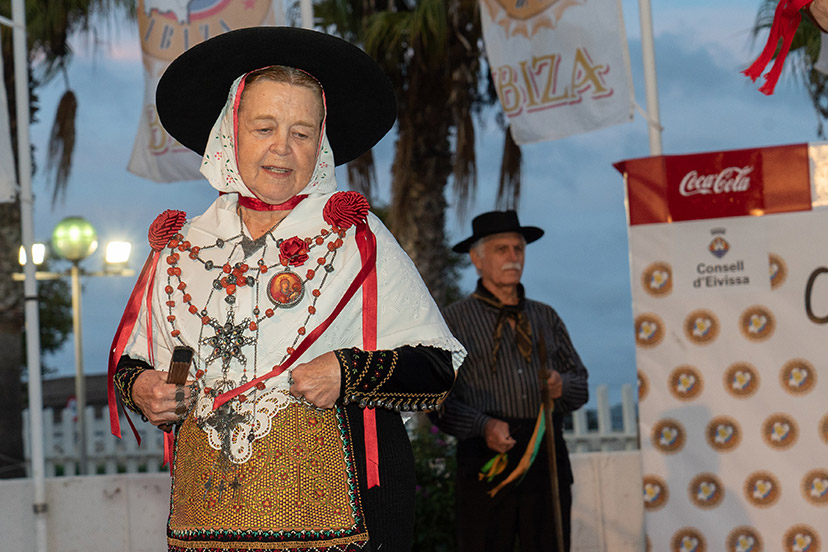Great travellers know that any place in the world is shaped by its culture, known for its tradition and loved for the art of its people. Discovering Ibiza’s folklore is easy if you have the opportunity to witness and enjoy its ball pagès.
The ball pagès is the traditional dance of the Pityusic Islands, an authentic folk performance in which a man and a woman dance accompanied by the island’s traditional instruments: the drum, the flute, the espasí (sword used as a percussion instrument) and the castanets; a unique music and dance tradition which is kept alive by the collas ibicencas (Ibizan music and dance associations).
The ball pagès is dance in which the steps of the woman are very different from those of the man. While the men leap and clap large castanets around the women, the women stand upright, beside or in front of them, making gentle curving movements.
The steps, the instruments and the dress are an art learned and fomented in the Pityusic Islands by a total of 14 colles de ball pagès, which promote the continuity of this dance and research into its history in their respective municipalities. Each group presents a different way of dancing and interpreting the tradition. The colles promote traditional customs and traditions from the youngest to the oldest members of the household. Friends, couples and families have been meeting for years in the squares, wells and parks of each town on the island to maintain their traditions.
The colles of Aubarca, Can Bonet, l’Horta de Jesús, Sant Rafel, es Vedrà, Sant Jordi, Sa Bodega, Sant Carles de Peralta, es Broll, Balansat, Vila, Labritja and Brisa de Portmany, together with the Sant Josep de Sa Talaia Folklore Group, are responsible for keeping the island’s history alive. Thanks to them, members of the Federació de Colles de Ball i Cultura Popular (Federation of Traditional Dance and Folklore Associations), Ibiza’s folklore is enjoyed and passed on from generation to generation, with the distinctive features of each of its towns and villages.



